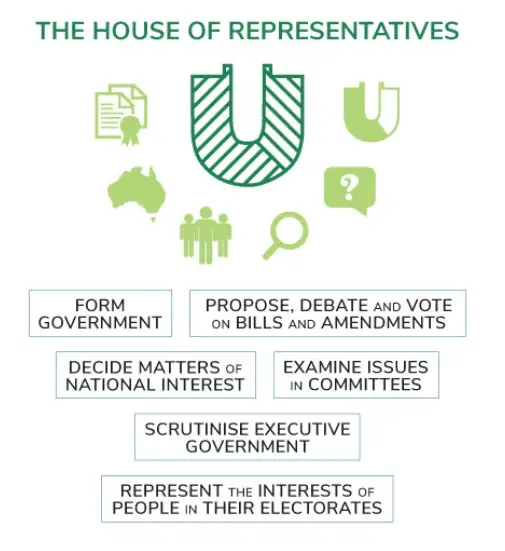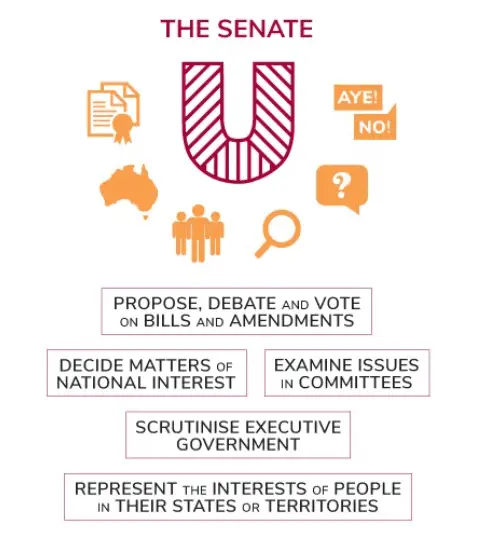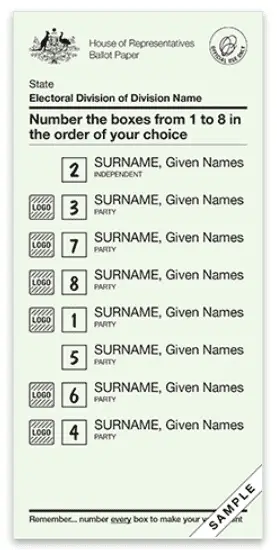#VoteClimate
Part 1: Understanding the Australian Parliament and How Your Vote Counts

Summary:
In a federal election, all 151 seats in the House of Representatives are up for grabs.
- Each electorate can vote one candidate into the House of Reps
- The party that has the majority of the seats in the House of Reps forms government
- Who you put as your first preference matters, even if there (appears to be) no chance that the candidate will win so vote according to your values
- There are usually two candidates that contend strongly for a seat and it’s important you understand which of the two you want to give your preference to
In a federal election, approximately half the 76 seats in the Senate are up for grabs
- Each state/territory votes for 6 candidates in each state and 1 candidate in each territory
- The candidate that stands for Senate does not need to live in a particular electorate, which is why there is more of a chance for independents and minor parties to do well in the Senate – it’s not always about the two major parties when it comes to the Senate
How did I end up here???
The hashtag “voteclimate” always baffled me. I’m all on board with the idea and general sentiment but how does a person #voteclimate exactly?
With an election coming up in Australia (as early as March or most likely in May), I thought it was about time I found out more.
And then I realised – I know nothing at all about Australian politics. I mean I am across the news and the antics in parliament (I’m one of those sad people that listen to ABC radio when picking up the kids from school). But I really know nothing at all about what happens when we cast a vote in an election.
So my exploration into how to #voteclimate led to giving myself a crash course in how our parliament is organised and how our votes are counted in an election.
I really think it’s important to know this otherwise elections just become a popularity contest – you end up voting for a party that looks good to you. That feels right.
It’s not a bad way to vote. But I think, by being better informed about our political structure, I can make more strategic decisions when it comes time for me to vote in the next election. I can vote in a way that supports climate action.
If you are an Australian citizen that cares about the environment but knows very little about the Australian parliament and how votes are counted then keep reading for a rundown of the basics.
What makes up the Australian Parliament?
The Australian parliament is made up of two houses – the House of Representatives (lower house or people’s house) and the Senate (the upper house or state’s house or house of review) (1).
At a federal election, members for both houses are up for election.
House of Representatives
Each state or territory in Australia is divided into electorates that contain similar numbers of voters.
The House of Reps is made up of 151 Members of Parliament (MPs) that are selected by the 151 electorates in Australia. MPs serve for 3-year terms before they are up for election again.
In a federal election, all 151 seats are up for grabs.
A candidate in an electorate must gain more than 50 percent of the votes at a federal election (or by-election) to win a seat in the House of Reps.
The political party (or coalition of parties) that has won the majority of seats in the House of Reps is the party that gets to form Government. The other major party forms the Opposition and any independents and minor party candidates form the Crossbench.
The Prime Minister is chosen by a vote of the members of the political party that has successfully formed Government at an election.
Senate
All states are equally represented in the Senate regardless of their size or population. Each state elects 12 senators, and the ACT and NT elect two senators each. So in total there are 76 senators in the Senate.
In a federal election, half the senators are up for election. That is because senators have 6 year terms.
In the 2022 election, 40 seats will be up for election (I have to admit that I am not sure why this is a little more than half this election).
A candidate must gain a designated quota of votes to be elected to represent their state or territory.
What is the role of each house in parliament?
The diagrams below provide a good little summary and visual of the role of the two houses (2)(3):


The role of the two houses is essentially the same at first glance but here are some additional points of note (2)(3):
- National laws are made and changed by debating and voting on bills (proposed laws). A bill must be agreed to in identical form in the House of Representatives and the Senate, and given Royal Assent by the Governor-General. It then becomes a law
- Bills are generally not introduced by the Senate, although they can be if senators decide to propose bills.
- Senators can not introduce appropriation bills (laws that deal with government spending)
How do I vote and how are my votes counted?
House of Representatives
The House of Representatives ballot papers are green in colour (4).

You will need to number all the boxes on this paper, in order of your preference.
Each electorate will have a different set of names on the green House of Reps ballot paper.
The successful candidate is the one that gets > 50% of the vote in that electorate. If they don’t get this based on first preferences, the second preferences on the voting papers for the candidate with the least votes are counted and added to the existing votes and so on until there is a candidate that receives > 50% of the votes in the electorate. Refer to the diagram below by the Australian Electoral Commission (the go-to for information on elections)(5):

So ultimately, if you are voting for an independent or minor party that does not have strong support in your electorate, you are unlikely to see them win the election. But that does not mean that who you put as number one does not matter – it still matters to vote for the candidate that aligns closely with your values because those votes do get counted and in turn, this does send a message to the elected official and the government. Let your voice be heard and don’t be discouraged by the fact that it may just be one of the two major parties that succeed in the election in the end.
Also, keep in mind that a candidate can receive funding based on the first preference votes that they receive. So putting candidates you believe in as your first preference could help them receive funds to cover the cost of running (they need to get at least 4% of the first preference votes to get electoral funding) (6).
Needless to say, the order of your preferences matter. Typically there are two strong candidates in any one electorate and it’s good to get clear on which one you prefer over the other and ensure your preferences when you vote reflect that.
Senate
The senate voting papers are white in colour and are very long! (7)

The order of the parties on the paper is chosen at random.
On the white Senate ballot paper, you need to either:
- number at least six boxes above the line for the parties or groups of your choice, or
- number at least 12 boxes below the line for individual candidates of your choice.
Preferential voting also applies to the Senate, but it works differently to how it works for the House of Reps.
Similar to the House of Reps, if you number the boxes above, your preferences will first be distributed to the candidates in the party of your first choice, then to candidates in the party of your second choice and so on, until all your preferences have been distributed. If you chose to number the boxes below, the preferences will go only to those candidates you have numbered (7).
To be successful, the candidate needs to get enough votes in the State or Territory to meet a quota. The quote is worked out as shown below (8):
(Number of formal ballot papers / (Number of senators to be elected + 1)) rounded down + 1 = Senate quota
I won’t go into the process any further because it gets a little mathematical. All that matters is to know that the votes are counted and the candidate that gets votes over the quota is elected. If there is no one that meets the quota or there are still seats to be filled (there should be around 6 in each major state) then the candidate with the lowest count is removed and the preferences are counted until there is a successful candidate. This continues until the required amount of senators has been selected for the State or Territory concerned. There is a step before this where votes above the quota are transferred but it doesn’t help to get into that. What I have described gives you the basic idea.
Note – the votes across the state count towards the Senate election – this election is not electorate-based. This really leaves it open to be anyone’s race – which is why you see a lot of independents and minor parties doing well in the Senate.
For more details see https://www.aec.gov.au/Voting/counting/senate_count.htm
And that’s essentially it. The basics explained.
In future posts I will get into useful websites to refer to, to understand what electorate you are in, how to find out who is running in your electorate, how to find out what they stand for and what you need to do to #voteclimate. Also will be covering how the major parties stack up in the whole climate change debate and why it is so important to #voteclimate in this year’s election.
References:




